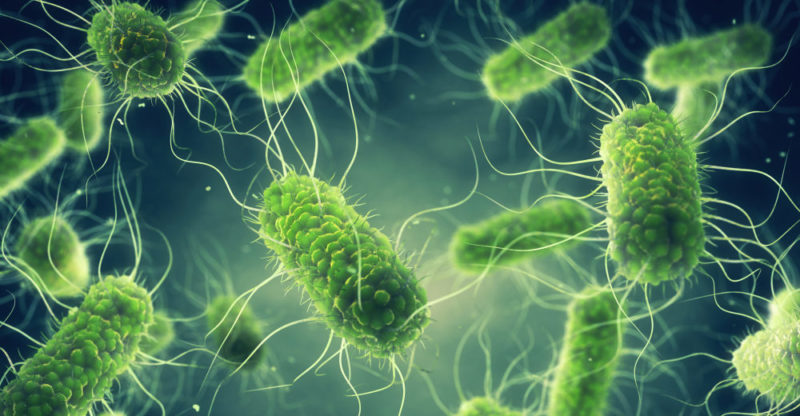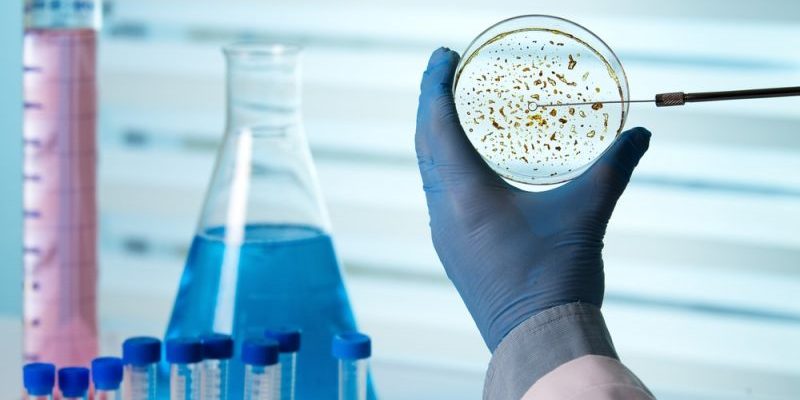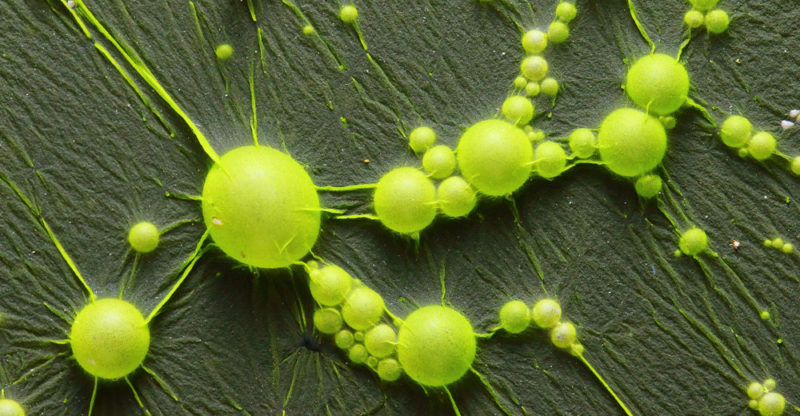We explain what microorganisms are, when they were discovered and their classification. Also, its characteristics and examples.
What are Microorganisms?
Microorganisms or microbes are understood to be living beings or biological systems so minute that they can only be observed using a microscope . These are life forms much simpler than plants and animals , which have individual characteristics and an elemental biological organization.The concept of microorganisms is, however, quite general and of practical use, without the intention of establishing some type of classification or taxonomy regarding the living beings it refers to. In fact, there are microorganisms with very different life forms , such as a virus and a bacterium.
Some microorganisms are pathogenic, that is, capable of causing disease , while others are entirely harmless and some are even part of the microscopic life that inhabits the interior of the human body .
The science that studies microorganisms is microbiology.
Discovery of microorganisms
 Since ancient times, human beings have attributed their diseases and other perceptible phenomena to the existence of invisible beings, which they often imagined as fairies or evil spirits , until scientific development opened for their eyes the universe of objects too tiny to see. naked eye.
Since ancient times, human beings have attributed their diseases and other perceptible phenomena to the existence of invisible beings, which they often imagined as fairies or evil spirits , until scientific development opened for their eyes the universe of objects too tiny to see. naked eye.Then, thanks to the invention of the microscope and other optical advancements , he was able to realize that there is very simple and very little life on almost all surfaces and substances: microorganisms or microbes.
The first to do so was Antonie van Leewenhoek in the 18th century , using devices of his own design; at the same time that Robert Hooke did it and wrote down his notes in Micrographia , his book on microbial life.
Common characteristics of microorganisms
Microscopic life can be very, very varied in its properties and characteristics . However, a life form (or object) is considered microscopic when it cannot be perceived with the naked eye, but with the help of specialized magnifying tools.To be considered microorganisms, these objects must be alive , although this seems to be questioned in the case of viruses and prions, whose existence seems to operate outside of what we understand as life .
Their sizes can vary greatly : if an average virus were the size of a tennis ball, a typical bacterium would be the size of half a tennis court and a eukaryotic cell the size of a football stadium.
Types of microorganism
 Microorganisms can be of the following types:
Microorganisms can be of the following types:
- Virus . They are the simplest and most ultramicroscopic biological systems known, barely visible with an electron microscope. Not much is known about their evolution and there are debates as to whether they are really living beings. Its reproduction consists of infecting other unicellular organisms (or cells of a multicellular one) and inoculating its genetic content (RNA or DNA, never both), so that instead of reproducing itself, the cell builds new replicas of the virus.
- Bacteria and archaea. These two types of unicellular and prokaryotic living beings(which do not have a genetic nucleus) are the simplest and most abundant microscopic living beings on the planet . They reproduce by dividing their genetic material and feeding on the surrounding environment, either autotrophically (chemosynthesis) or parasitically.
- Cyanophyseal algae. Called cyanobacteria, they are a type of bacteria that performs oxygenic photosynthesis, much like plants. They are much larger than ordinary bacteria.
- Protists . Protists or protozoa are eukaryotic unicellular organisms, of much larger size: they can reach 1mm. They usually live in humid or aquatic environments, although many also have parasitic lives, within complex beings such as humans. They are usually predators of other microbes or detritophages (they feed on waste).
- Fungi . In the fungi kingdom, many varieties are microscopic, like yeasts , capable of producing infectious diseases. They are also eukaryotes.
Habitat of microorganisms
Microbe habitat is known as microhabitat and is equivalent to higher animal ecosystems , but on a very small scale.Some microbes are considered free life , as an important part of the cycles of nature, and can hallárselos in water , surfaces in waste land , etc.
Others, on the other hand, must inhabit specific habitats, such as the interior of other living beings , in the case of parasitic ones. In the intestine of human beings there is a true bacterial fauna that collaborates with our digestion processes, for example.
Feeding of microorganisms
 Microbe nutrition processes are usually of two types:
Microbe nutrition processes are usually of two types:
- Heterotrophs . Those that absorb their nutrients from the surrounding environment, either by letting scattered portions of nutrients pass into them, or by feeding on other microorganisms (or even by entering them, such as viruses). This way they get the energy to keep their life cycles going.
- Autotrophs . Those who are able to tap energy sources of the environment , such as light sun (photosynthesis) or volcanic heat (chemosynthesis) to undertake chemical processes that give them useful energy.
Observation of microorganisms
Observing most microbes requires a microscope , since most are between 0.4 and 5 microns (bacteria).Viruses are even smaller and require powerful microscopes (between 10 and 300 nanometers), while some protozoa are so large that they are almost a millimeter in size and can be seen with a magnifying glass.
Cultivation of microorganisms
 Microbes can be grown in the laboratory for scientific study and use. There are two ways of growing:
Microbes can be grown in the laboratory for scientific study and use. There are two ways of growing:
- Aerobic. It is the simplest technique, which involves using ordinary atmospheric conditions. However, with this system, only the species of microbes that coexist with a medium rich in oxygen will grow .
- Anaerobic. It is the specialized technique for anaerobic microorganisms, that is, they do not require oxygen. It consists of replacing this gas with nitrogen , to reproduce the conditions in which many species grow in volcanic, underground or even intestinal contexts.
Pathogenic microorganisms
Many of the diseases known to man are caused by the infection of the body by microbes of various kinds , especially viruses and bacteria.These microscopic beings penetrate the body through various routes (cuts in the skin , food intake , respiration , absorption through the skin, etc.) and once inside they reproduce and proliferate, damaging tissues and cells in the process.
Depending on the type of microbe, they can be fought with antibiotics (bacteria) or antivirals (viruses), or antifungals (fungi).
Ecological role of microorganisms
 Many free-living microorganisms play a vital role in the balance of the ecosystem , since they are responsible for the decomposition of residual organic matter and its mineralization in the soil and water, to be used again by plants and other producing species.
Many free-living microorganisms play a vital role in the balance of the ecosystem , since they are responsible for the decomposition of residual organic matter and its mineralization in the soil and water, to be used again by plants and other producing species.In addition, cyanobacteria fix environmental CO 2 and release oxygen , essential for animal respiration.
Examples of microorganisms
Some examples of each type of microorganism are:
- Flu virus. A typical RNA virus of the family orthomyxoviridae , it is known for its variability and its symptoms of infection, known as a cold.
- Escherichia coli bacteria . Abbreviated E. coli, is an enterobacteria common in the gastrointestinal tract of warm- blooded animals , including humans. It is anaerobic and responsible for numerous intestinal and urinary infections.
- Cyanobacterium Anabaena flosaquae . A cyanobacterium of asexual reproduction (by mitosis) of the order of nostocales, common in fresh water and capable of photosynthesis.
- Amoeba protozoan. Also known as amoeba, it is a very varied cellular protist, with some species of enormous size (700/800 micrometers) and that can be free-living (as a predator) or parasitic.
- Saccharomyces cerevisiae yeast . The best known and most typical of microscopic yeasts.
The above content published at Collaborative Research Group is for informational and educational purposes only and has been developed by referring reliable sources and recommendations from technology experts. We do not have any contact with official entities nor do we intend to replace the information that they emit.
MA student of the TransAtlantic Masters program at UNC-Chapel Hill. Political Science with a focus on European Studies. Expressed ideas are open to revision. He not only covers Technical articles but also has skills in the fields of SEO, graphics, web development and coding. .
Leave a reply
Your email address will not be published. Required fields are marked *Recent post

Sport: What Is It, Types, Risks, Features, Characteristics and Examples

Dogs: Emergence, Features, Characteristics, Feeding and Breeds

Story: Definition, Elements, Structure, Features and Characteristics

